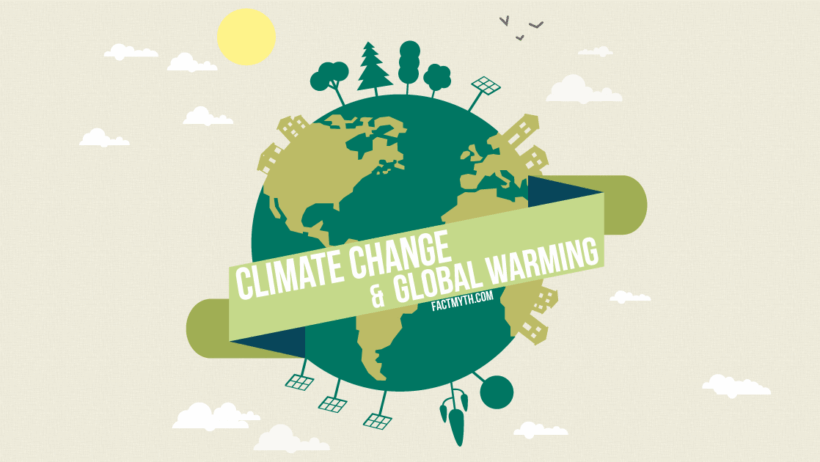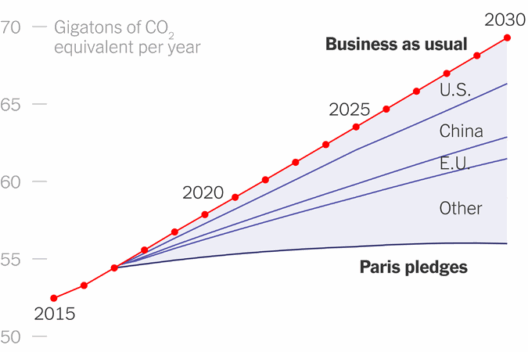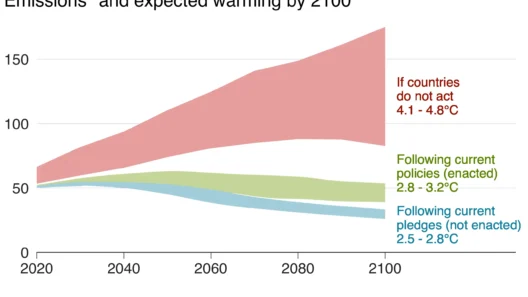In the vast tapestry of environmental discussions, two terms often intertwine yet remain confusing to the uninitiated: climate change and global warming. These phrases are frequently used interchangeably, leading to a mélange of misconceptions. It is essential to disentangle these concepts to effectively advocate for our planet’s future and understand the complex dynamics at play.
To envision this distinction, imagine a colossal ship navigating through the turbulent seas of our atmosphere. Global warming acts as the engine driving the ship forward, characterized by the increase in Earth’s average surface temperature due to the accumulation of greenhouse gases. Climate change, conversely, encompasses the broader array of shifts influencing the ocean currents, wind patterns, and weather extremes that dictate the ship’s course. While global warming is indeed a significant factor contributing to climate change, it is merely one cog in a much more complex wheel.
At its core, global warming refers specifically to the increase in temperatures over time, primarily attributed to human activities such as burning fossil fuels, deforestation, and industrial processes. This rise in temperature is evidenced by rising sea levels, shrinking ice sheets, and altered habitats. However, the term climate change transcends mere temperature increases; it incorporates alterations in precipitation patterns, increased frequency of extreme weather events, and shifts in ecosystems and wildlife migrations.
The relationship between the two can be likened to that of a single note in a symphony. Global warming is a singular note—a prominent one, to be sure—but it harmonizes within the larger composition known as climate change. This symphony resonates with complex interactions among atmospheric gases, ocean chemistry, and terrestrial ecosystems. Emphasizing only global warming risks overlooking essential elements of this intricate score.
Climate change manifests in numerous ways, dramatically impacting life on Earth. One striking consequence is the increase in severe weather events, such as hurricanes, droughts, and heavy rainfall. The intensity and frequency of these phenomena bear testimony to the alterations in our climate systems—changes that extend beyond temperature alone. For instance, warmer sea surface temperatures fuel more powerful tropical storms, resulting in catastrophic consequences for coastal communities.
Another key element of climate change is its influence on biodiversity. Habitats are shifting; species must adapt, migrate, or face extinction. Polar bears and other Arctic fauna feel the effects of melting ice, while coral reefs, often referred to as the “rainforests of the sea,” suffer from bleaching due to elevated water temperatures. These examples illustrate how global warming may set the stage, but climate change encompasses the broader implications for ecosystems and our planet’s biological diversity.
Moreover, the effects of climate change are profoundly interconnected with human health and well-being. As weather patterns become less predictable, food security diminishes. Crop yields can suffer due to unseasonable frosts or prolonged droughts, leading to malnutrition and food scarcity in vulnerable regions. The increase in heatwaves can exacerbate conditions related to cardiovascular and respiratory diseases, disproportionately affecting marginalized communities with limited access to healthcare.
Recognizing this intricate web of consequences, it’s essential to adopt a comprehensive approach when addressing these pressing issues. Strategies aimed solely at reducing global warming by cutting greenhouse gas emissions are fundamental. However, equally critical is the need to develop adaptive measures that encompass the broader effects of climate change. This includes fortifying infrastructure against extreme weather, preserving fragile ecosystems, and fostering sustainable agricultural practices.
Education plays a pivotal role in elucidating the differences between climate change and global warming. Public understanding is paramount for catalyzing action at various levels—individual, communal, and governmental. Promoting awareness about the multifaceted nature of climate issues can inspire informed choices, leading to systematic changes that address not only the symptoms but also the root causes of the crisis.
Policy initiatives must reflect this understanding, integrating scientific research with practical solutions. For example, initiatives that focus on carbon neutrality must also consider the impact of climate resilience and adaptation strategies. Urban planning should incorporate climate projections, ensuring that cities can withstand severe weather events. Such measures promote not only environmental sustainability but also economic viability and public health.
In conclusion, while global warming and climate change are inextricably linked, recognizing their distinction is essential for effective discourse and action. Global warming, akin to a malfunctioning engine, acts as a primary driver of the broader phenomenon of climate change—a complex interplay of various factors influencing our planet’s future. To navigate these turbulent seas, we must remain vigilant, informed, and proactive. Embracing this nuanced perspective will enable us to address the myriad challenges posed by climate change, fostering a more resilient and equitable world for generations to come.







